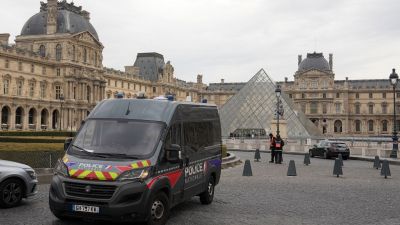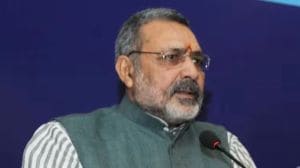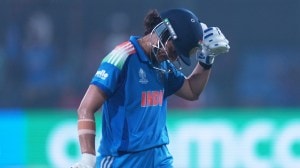A House for Mr Mehboob Desai
In Ahmedabad,a property fair for Muslims spotlights a deep-seated prejudice.
In Ahmedabad,a property fair for Muslims spotlights a deep-seated prejudice.
There is never a recession in the housing market in Muslim areas, says Ashvin Patel,a developer who has been building homes for Muslims in Ahmedabad for the last 10 years. There are very few Muslim areas in the city. With choices so limited,the prices of houses rise 10-15 per cent faster than those in Hindu areas, Patel says.
It is a city so bitterly divided that even prejudice is a business opportunity.
The extreme segregation of Muslims is a feature of life in Ahmedabad; they are dissuaded from buying or renting homes in non-Muslim areas and find it difficult to find good housing options in the ghettos they are often forced to live in. So when a Web portal organised a property show exclusively for Muslims last week,it was a success. Over 20,000 visitors flocked to the venue to inspect homes priced between Rs 10 lakh and Rs 1 crore. There was a palpable demand from the Muslim community for such a show. Educated youth and businessmen who move to Ahmedabad find house-hunting difficult. Even local Muslim buyers don’t know enough about the options available for the community, says 30-year-old Ali Hussain Mohammed, director of the portal ummat.in. Nevertheless,Ali was surprised by the number of people who turned up,especially by the large presence of wealthy families.
Thirty-seven-year-old Mehboob Desai,a sales and marketing executive,came to the fair looking to buy a bungalow within Rs 25 lakh. He said he had gone to a show organised by the Gujarat Institute of Housing and Estate Developers,which consists of mostly Hindu builders,but did not find much. The needs of a Muslim home buyer are very different. For instance,we want to live near our relatives and friends; it makes us feel more secure. We need a mosque nearby for our daily prayers, said Desai,who lives in an apartment in one of the few Muslim pockets in Vejalpur area.
Budget was not a constraint for Mohsin Sheikh,a trader in chemicals,but the fears were similar. Affluent Muslims do not try to buy a house in Hindu areas. We prefer living within our community. We look for basic facilities: access to a mosque,a school for our children and food joints that serve non-vegetarian food. All this is hard to find in non-Muslim areas, said Sheikh,who owns two shops in Sarkhej and drives an Audi. According to him,the issue of security has become even more important to Muslim home buyers after the communal riots of 2002.
Commercial areas,though,seem to be more insulated from such prejudice. Azim Maniar,who runs his tyre business in affluent Hindu-dominated areas like Bodakdev and Satellite,says,The problem is not with business. The problem comes only if you are looking to stay in a Hindu locality.
But while development and prosperity have made lives better,they have not weakened the suspicion between communities. Social segregation of Muslims and Dalits can even be seen in cities like Delhi. But it is the most striking in Ahmedabad. Here housing societies or colonies have been divided on the basis of caste since the 1960s. One would imagine that with all the modernisation and growth,a cosmopolitan culture would emerge. Unfortunately,this has not happened, says Gujarat-based sociologist Ghanshyam Shah.
Episodes of communal violence since 1969 and legitimisation of casteism and communalism by political parties in Gujarat have created a segregated society,he says. Even laws meant to deter ghettoisation,like the Gujarat Prohibition of Transfer of Immovable Property and Provisions for Protection of Tenants from Eviction from Premises in Disturbed Areas Act,1991, have failed. The Act aims to prevent distress sale of property by a person whose house is in an area dominated by members of another community.
A walk through the neighbourhoods in Ahmedabad reveals the many ways in which two communities have turned away from each other. Colonies are called India or Pakistan depending on their inhabitants and streets and passages that divide one area from the other are dubbed borders. Physical walls divide the communities in areas like Shahpur,Gomtipur and Vejalpur areas,while other borders are imaginary. My impression is that now there are fewer public declarations of neighbourhood identity as compared with the violence in 2002 when flags (green and saffron) would demarcate areas. People generally express an understanding of the borders of each community,where their own ends,where others begin, says US-based historian Howard Spodek,who calls Ahmedabad his second home,and is the author of Ahmedabad: Shock City of Twentieth-Century India.
Most Muslim neighbourhoods (Vatva,Citzen Nagar,Naroda Patiya,Kalupur,Jamalpur,etc) are largely poor and densely populated,and have few amenities. But things have started to change as well-to-do Muslims and professionals unable to find good housing elsewhere in the city move to these areas. Even parts of Juhapura,one of the biggest Muslim ghettos in Asia,have begun to resemble a middle-class suburb.They have better roads and drainage,and banks and ATMs have also come up.
Most of the housing projects displayed at the Muslim property show will also come up in Sarkhej,the western neighbourhood of Juhapura. Town planning schemes introduced in this area are changing the skyline. Even Muslim NRIs want to buy homes here, says Fazal Memon,director of Infinity Realty India Pvt Ltd.
Despite the ghettoisation,the rising incomes and aspirations of the Muslim community are slowly changing the way it lives.
Meanwhile,Ali plans to take the community-specific property show to other cities of Gujarat,including Surat,Rajkot,Palanpur and Vadodara; all of which have a sizeable population of Muslims.





- 01
- 02
- 03
- 04
- 05


























